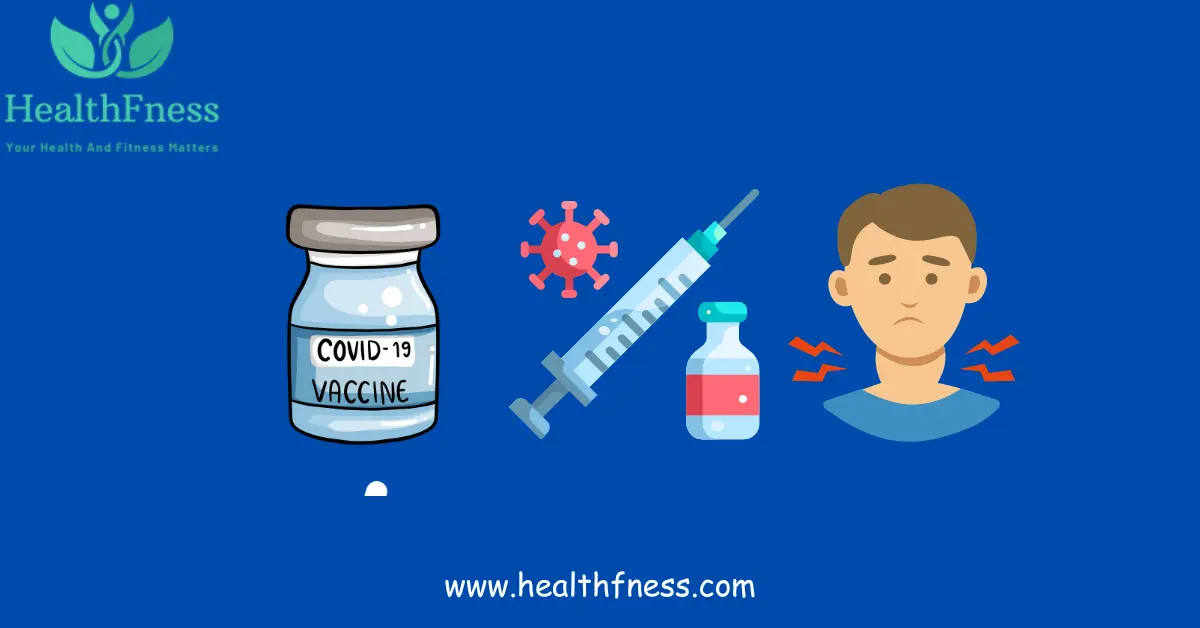If you’ve received a COVID-19 vaccine, you might have noticed a new, tender lump in your armpit or neck a few days later. This experience, while sometimes alarming, is a very common and generally harmless side effect. It’s a visible sign that your immune system is doing exactly what it’s supposed to do: building powerful protection against the virus.
However, this reaction has raised many questions and concerns, especially for individuals undergoing cancer screenings. This comprehensive guide will walk you through everything you need to know about Swollen Lymph Nodes After COVID Vaccine. We’ll explore the science behind it, review the latest 2024 research, provide practical tips for managing it, and clarify when it might be time to talk to a doctor.
What Are Swollen Lymph Nodes? An Overview of Lymphadenopathy
To understand why your lymph nodes swell, it’s helpful to first know what they are. Lymph nodes, or lymph glands, are small, bean-shaped structures that are a crucial part of your body’s immune system. Think of them as busy security checkpoints scattered throughout your body, with major hubs in your neck, armpits, collarbone area, and groin.
Their main job is to filter lymph, a clear fluid that circulates through your body, trapping and destroying harmful invaders like viruses and bacteria. They are packed with specialized white blood cells, including lymphocytes (T-cells and B-cells), which are the soldiers of your immune system.
When your body detects an infection or receives a vaccine, these immune cells rapidly multiply inside the lymph nodes to mount a defense. This surge in activity causes the nodes to enlarge, a condition medically known as lymphadenopathy. So, when you feel a swollen lymph node, you’re feeling your immune system hard at work.
Why Does the COVID-19 Vaccine Cause Lymph Nodes to Swell?
The swelling of lymph nodes after a COVID-19 vaccine, particularly the mRNA vaccines (Pfizer-BioNTech and Moderna), is a direct result of the robust immune response they generate. Here’s a step-by-step breakdown of what happens:
- Injection and Antigen Presentation: The vaccine is injected into the muscle of your upper arm (the deltoid). The vaccine instructs your muscle cells to produce a harmless piece of the coronavirus called the “spike protein.”
- Immune Cell Activation: Specialized immune cells, called antigen-presenting cells (APCs), recognize these spike proteins as foreign. They capture them and travel to the nearest set of lymph nodes, most commonly the axillary (armpit) nodes on the same side as the injection.
- The Lymph Node “Training Ground”: Inside the lymph nodes, the APCs present the spike protein to T-cells and B-cells. This presentation acts as a training exercise. The B-cells learn to produce antibodies that can neutralize the real virus, while T-cells learn to identify and destroy infected cells.
- Rapid Multiplication and Swelling: To build a strong army, these activated T-cells and B-cells begin to multiply at an incredible rate. This rapid proliferation of cells, along with increased fluid, causes the lymph node to expand in size, leading to the swelling and tenderness you might feel.
This reaction is a positive indicator. It shows that your body is successfully creating the memory cells and antibodies needed to protect you from future COVID-19 infection. While other vaccines can also cause lymphadenopathy, studies have noted it’s more frequent and pronounced with the highly effective mRNA COVID-19 vaccines.
The Importance of Understanding This Side Effect: Avoiding Unnecessary Anxiety and Tests
While swollen lymph nodes are typically a good sign, they created a significant “diagnostic dilemma” in the medical community, particularly in radiology and oncology. Here’s why understanding this side effect is so important:
- Reducing Cancer-Related Anxiety: A new lump in the armpit can be a terrifying discovery, as it is a well-known potential sign of breast cancer that has spread to the lymph nodes (metastasis) or lymphoma. Knowing that this is an expected vaccine side effect can prevent immense stress and worry.
- Preventing False Alarms on Imaging: Swollen lymph nodes show up clearly on medical imaging like mammograms, CT scans, and PET scans. Radiologists initially saw a spike in “suspicious” axillary lymphadenopathy on mammograms, leading to recalls for further testing, such as ultrasounds and even biopsies.
- Informing Medical Decisions: For patients undergoing cancer treatment or follow-up, vaccine-related lymphadenopathy can be mistaken for cancer recurrence or progression. This could potentially lead to unnecessary and invasive procedures or incorrect changes in treatment plans.
By being aware of this phenomenon, both patients and healthcare providers can make more informed decisions, ensuring that cancer screenings remain accurate and that individuals are not subjected to needless follow-up tests.
A Deeper Look at COVID-19 Vaccine-Associated Lymphadenopathy (C19-LAP)
To provide a clearer picture, let’s dive into the specifics of what research has shown about this side effect, including how common it is and how long it typically lasts.
How Common Is It?
The reported incidence varies widely. Initial clinical trials reported lower rates. For example, the Pfizer-BioNTech trial noted axillary swelling or tenderness in 0.3% of participants, while the Moderna trial reported it in 11.6% after the first dose and 16% after the second.
However, subsequent real-world studies using imaging have found the rate of subclinical (not felt, but visible on scans) lymphadenopathy to be much higher. Some studies reported that up to 50% or more of vaccinated individuals showed some lymph node enlargement on mammograms or ultrasounds.
A comprehensive 2024 review published in Infez Med analyzed 54 cases and confirmed that this reaction is a well-documented phenomenon, particularly in women and often appearing after any of the first three vaccine doses.
How Long Does It Last?
For most people, vaccine-related lymph node swelling is temporary. It typically appears 2-4 days after vaccination and resolves on its own within a few weeks. The Society of Breast Imaging (SBI) suggests that if the swelling persists for more than six weeks after vaccination without any other cause, it’s reasonable to seek medical evaluation.
Is It More Common With Boosters?
Yes, many people report more noticeable lymph node swelling after their booster shot. This is likely because your immune system already has memory cells from the primary vaccine series. When these experienced cells are re-exposed to the spike protein from the booster, they mount an even faster and more robust response, leading to more pronounced inflammation and swelling in the lymph nodes.
Latest Studies and Pathological Findings
The widespread vaccination campaigns have provided a wealth of data, allowing researchers to study this side effect in depth. Here are some of the latest findings:
- Most Cases are Benign Reactive Hyperplasia: The June 2024 review in Infez Med analyzed cases where biopsies were performed on swollen lymph nodes after COVID-19 vaccination. The overwhelming majority of diagnoses were benign conditions. Out of 54 cases studied, the most common findings were reactive lymphadenopathy (28 cases) and follicular hyperplasia (13 cases). These terms simply describe a non-cancerous, over-active immune response within the lymph node.
- Rare Inflammatory Conditions: In a small number of cases, the intense immune stimulation from the vaccine was associated with other specific inflammatory conditions. The same 2024 review noted six cases of Kikuchi-Fujimoto disease (a rare, benign condition causing fever and swollen lymph nodes), two cases of granulomatous lymphadenitis, and one case of eosinophilic lymph node abscesses. These are still considered benign and typically resolve with time or anti-inflammatory treatment.
- True Malignancies are Rare but Possible: It’s crucial to remember that correlation does not equal causation. In the pooled analysis of 54 patients who underwent biopsies, only two cases of metastases were found. This highlights an important point: while the vaccine is the most likely cause of new lymphadenopathy shortly after a shot, it doesn’t grant immunity from other medical conditions. It’s a reminder of why persistent symptoms should always be evaluated.
- Imaging Characteristics: A 2023 study in Radiology characterized the MRI appearance of post-vaccine lymphadenopathy, noting features like cortical thickening but often with a preserved fatty hilum, a sign that helps radiologists distinguish it from cancerous nodes. This growing body of knowledge helps prevent misinterpretation of imaging results.
Comparison: Vaccine-Related Swelling vs. Other Causes
To help you better understand the context, this table compares the typical features of swollen lymph nodes from the COVID-19 vaccine against other common causes.
| Feature | COVID-19 Vaccine-Related | Common Viral Infection (e.g., Mono) | Bacterial Infection (e.g., Strep Throat) | Cancer (e.g., Lymphoma, Metastasis) |
|---|---|---|---|---|
| Onset | Rapid, typically 2-7 days after vaccination. | Gradual, along with other symptoms of illness. | Rapid, often with acute symptoms like sore throat or fever. | Gradual and persistent, often growing over weeks to months. |
| Location | Localized to the side of injection (armpit, neck, collarbone). | Often widespread, but commonly prominent in the neck. | Localized to the area of infection (e.g., under the jaw for strep throat). | Can be localized or widespread; may appear without a clear trigger. |
| Tenderness/Pain | Often tender or sore to the touch. | Can be tender or painless. | Usually very tender and painful. | Typically painless, rubbery, or hard. |
| Duration | Temporary, resolves within a few days to six weeks. | Resolves as the illness clears, usually within 2-4 weeks. | Resolves quickly with antibiotics. | Persistent and often continues to grow. |
| Associated Symptoms | May occur with other vaccine side effects like arm soreness, fatigue, or mild fever. | Occurs with fever, extreme fatigue, sore throat, and sometimes a rash. | Occurs with high fever, severe sore throat, and other signs of infection. | May be associated with “B symptoms” like unexplained weight loss, night sweats, and persistent fever. |
Practical Tips: How to Manage Swollen Lymph Nodes and Cancer Screenings
Armed with this knowledge, here are actionable steps you can take to manage discomfort and navigate medical appointments.
For Managing Discomfort at Home
If your swollen lymph nodes are causing discomfort, these simple measures can help:
- Warm Compress: Applying a warm, moist cloth to the area for 10-15 minutes a few times a day can help soothe the tenderness.
- Over-the-Counter Pain Relievers: Medications like ibuprofen (Advil, Motrin) or acetaminophen (Tylenol) can reduce pain and inflammation. Always follow the package directions and consult your doctor if you have other health conditions or are taking other medications.
- Gentle Movement: Avoid putting pressure on the area, but gentle arm movements can help with circulation.
For Navigating Cancer Screenings (Mammograms, CT, PET Scans)
Proper planning is key to avoiding false alarms on your imaging tests. Leading medical bodies like the Society of Breast Imaging and the National Comprehensive Cancer Network have provided clear guidance:
- Time Your Appointments Wisely: If possible, schedule your routine screening mammogram or other imaging before your COVID-19 vaccine or wait 4-6 weeks after your final dose (including boosters). This allows time for any lymph node swelling to resolve.
- Do Not Delay Important Screenings: If you are due for a diagnostic screening (for example, to evaluate a new lump you’ve found), do not delay it. The risk of delaying a potential cancer diagnosis is greater than the inconvenience of a vaccine-related false positive.
- Communicate with the Imaging Team: This is the most important step. When you arrive for your appointment, tell the technologist and/or radiologist:
- The date(s) you received your COVID-19 vaccine(s).
- Which arm the injection was given in.
This information is critical context that allows the radiologist to correctly interpret your images. If they see swollen nodes on the same side as your shot, they are much more likely to identify it as a vaccine reaction rather than something suspicious.
- Special Considerations for Cancer Patients: If you have a history of cancer, especially breast cancer, discuss vaccine timing with your oncologist. They may recommend getting the vaccine in the arm on the opposite side of your cancer. In some cases, they may even suggest getting the injection in your thigh to avoid any confusion with lymph nodes in the upper body.
When to See a Doctor
While post-vaccine lymphadenopathy is almost always benign, it’s important to know the red flags that warrant a medical evaluation. Contact your doctor if you experience any of the following:
- The swollen lymph nodes persist for more than six weeks.
- The lymph nodes continue to get larger over time.
- The nodes feel hard, fixed in place, or rubbery rather than soft and mobile.
- You have swelling in multiple areas, including on the side opposite your injection.
- The skin over the lymph node is persistently red or looks infected.
- You are experiencing other systemic symptoms, such as:
- Unexplained weight loss
- Drenching night sweats
- Persistent fevers
- Extreme fatigue that doesn’t go away
Your doctor can perform a physical exam and determine if any further investigation, like blood work or imaging, is needed.
Frequently Asked Questions (FAQs)
How do you treat swollen lymph nodes after the COVID vaccine?
In most cases, no specific treatment is needed as the swelling resolves on its own within a few weeks. For discomfort, you can use a warm compress and over-the-counter pain relievers like ibuprofen or acetaminophen after consulting with your doctor.
How long do lymph nodes stay swollen after the COVID vaccine?
The swelling typically appears a few days after vaccination and lasts from a few days to a few weeks. Medical guidelines suggest that if the swelling persists for more than six weeks, it’s a good idea to consult a healthcare provider for an evaluation.
Can the COVID booster shot cause more severe lymph node swelling?
Yes, it is common for the booster shot to cause a more noticeable or intense lymph node reaction. This is because your immune system is already primed from the initial vaccine doses. The memory cells react more quickly and strongly, leading to more significant inflammation and swelling as a sign of a robust immune recall response.
Are swollen lymph nodes in the neck common after the COVID vaccine?
Yes. While the armpit (axillary) nodes are the most common site, it’s also common to have swelling in the supraclavicular (above the collarbone) and cervical (neck) lymph nodes on the same side as the injection, as they are part of the same drainage basin.
Should I be worried if my lymph nodes are still swollen months after the vaccine?
If your lymph nodes remain swollen for more than six weeks, you should schedule an appointment with your doctor. While it may still be a prolonged benign reaction, it’s important to rule out other potential causes. Your doctor will evaluate the size, texture, and location of the nodes and decide if further steps are necessary.
Is having swollen lymph nodes a sign the vaccine is working well?
Generally, yes. Swollen lymph nodes are a physical manifestation of a strong immune response being generated inside them. It indicates that your body is actively building protection. However, the absence of swollen lymph nodes does not mean the vaccine isn’t working. Immune responses vary from person to person, and many people build excellent immunity without any noticeable side effects.
Conclusion: A Reassuring Sign of a Working Immune System
Swollen lymph nodes after a COVID-19 vaccine are a common, expected, and ultimately reassuring sign that your immune system is learning how to fight the virus. This temporary side effect is a direct result of the powerful protection being built within your body. While it can cause initial concern, especially when it mimics signs of other serious conditions, understanding the cause and typical timeline can alleviate anxiety.
The key takeaways are communication and awareness. Always inform your healthcare providers about your vaccination status before any imaging scans to ensure accurate interpretation. For most people, the swelling will fade on its own. However, always listen to your body and consult a doctor if the swelling persists, grows, or is accompanied by other concerning symptoms. By staying informed, you can confidently navigate this normal part of the vaccination process.
References
- Ciliberti, V., et al. (2024). “COVID-19 vaccine-associated lymphadenopathy: a review.” Infez Med, 32(2), 119–130. https://www.ncbi.nlm.nih.gov/pmc/articles/PMC11142413/
- Society of Breast Imaging. (2022). “SBI Recommendations for the Management of Axillary Adenopathy in Patients with Recent COVID-19 Vaccination.” Link to SBI Recommendations
- Centers for Disease Control and Prevention (CDC). “Local Reactions, Systemic Reactions, Allergic Reactions, and Anaphylaxis After Vaccination.” https://www.cdc.gov/vaccines/hcp/acip-recs/general-recs/adverse-reactions.html
- Yoshikawa, T., et al. (2023). “Axillary Lymphadenopathy after Pfizer-BioNTech and Moderna COVID-19 Vaccination: MRI Evaluation.” Radiology, 306(1), 270-278. https://pubs.rsna.org/doi/10.1148/radiol.220814
- Özütemiz, C., et al. (2021). “Lymphadenopathy in COVID-19 Vaccine Recipients: Diagnostic Dilemma in Oncologic Patients.” Radiology, 300(1), E296-E300. https://pubs.rsna.org/doi/10.1148/radiol.2021210275

Dr. Mark Jenkins, MD - General Physician (California, USA)
Dr. Mark Jenkins is a board-certified general physician based in the United States, specializing in preventive medicine, nutrition, and lifestyle health. With years of clinical experience in primary care, he is dedicated to helping patients and readers alike make informed, science-based decisions about their well-being.
As a trusted medical reviewer and contributor to Healthfness.com, Dr. Jenkins ensures that all health content meets the highest standards of accuracy, safety, and evidence-based medicine. His expertise bridges modern medical science with practical, everyday wellness strategies, making complex topics approachable for all audiences.
Outside the clinic, Dr. Jenkins is passionate about living the healthy lifestyle he teaches. He enjoys hiking with his dog, experimenting with vegetarian cooking, and exploring the latest health research. He believes that small, consistent lifestyle changes lead to lasting health improvements, and he aims to inspire readers to take proactive steps toward a healthier, happier life.
Explore more of Dr. Jenkins’ evidence-based insights at Healthfness.com



